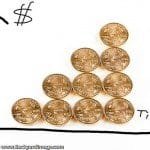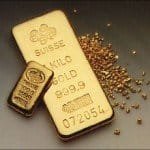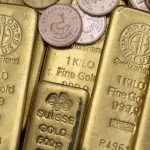Kenaikan harga emas pada pasaran tempatan dan luar negara lazimnya dikaitkan dengan 3 faktor utama seperti di bawah, bagi mereka yang ingin memulakan pelaburan emas, anda bolehlah lihat bagaimana berikut boleh mengubah harga pasaran emas semasa.
Faktor Pertama ialah penyusutan nilai dolar Amerika. Apabila nilai dolar Amerika susut harga emas akan naik, apabila dolar Amerika stabil harga emas akan susut. Emas bertindak sebagai pelindung nilai menentang dolar Amerika. Pada masa ini dolar Amerika lemah dan menunjukkan tanda-tanda akan menjadi lebih lemah. Ada juga ura-ura negara Asia Barat dan China akan menggunakan mata wang lain selain dolar Amerika disebabkan kelemahan dolar Amerika ini. Walaupun peralihan kepada mata wang selain dolar Amerika (euro misalnya atau mata wang bentuk baru) bukan sesuatu yang boleh berlaku dengan segera, berita itu telah cukup untuk melonjakkan harga emas dunia.
Faktor kedua ialah harga emas akan naik selari dengan kadar inflasi. Apabila inflasi naik, harga emas akan naik selaras dengan inflasi. Dalam keadaan negara-negara di dunia termasuk kuasa-kuasa ekonomi besar menyuntik pakej rangsangan ekonomi dengan besar seperti AS$787 bilion pakej rangsangan Amerika Syarikat kesannya ialah peningkatan inflasi. Amerika hanya mengecap duitnya sesuka hati dan ini akan menyebabkan nilai duitnya akan turun.
Faktor ketiga ialah kenaikan harga petroleum akan menyebabkan harga emas naik selari dengan kenaikan kos penghasilan dan penghantaran barangan, jika harga petroleum jatuh. dijangka emas juga akan turun tetapi pada tahap minimum. Terdapat beberapa cara untuk melabur dalam bentuk emas dan diterangkan secara lengkap di dalam www.gold.org/value. Orang ramai boleh melabur secara langsung dengan membeli emas bulion (jongkong), syiling emas, dinar emas, atau secara tidak langsung melalui gold futures, options, waran atau sijil pelaburan. Salah satu cara paling popular dan cepat berkembang dalam sekuriti bursa di seluruh dunia yang dikenali dengan nama Gold ETF (Exchange Traded Fund). Antara bursa saham dunia yang menawarkan Gold ETF ialah di Australia, Amerika Syarikat, Perancis, Hong Kong, Jepun, Mexico, Afrika Selatan, Switzerland, Singapura, Turki dan United Kingdom. ETF ini dalam bentuk sekuriti dan disokong 100 peratus oleh emas secara fizikal. Pelaburan secara ini berkembang dengan pesat sehingga 38 peratus daripada pelaburan yang dikenal pasti terdiri daripada sekuriti bentuk ini. Di sini belum ada lagi Gold Emas ini diperdagangkan di bursa kita. Melihat pergolakan yang berlaku sekarang terutama sekali tergugatnya kedudukan Dolar Amerika ekoran krisis ekonomi yang berpunca di Amerika, daripada mereka dan merebak ke seluruh dunia. Orang ramai sudah tentu mencari sesuatu bentuk pelaburan yang lebih selamat daripada pergolakan harga.

KIRA VALUE EMAS KALKULATOR EMAS, AR-RAHNU, PAJAK GADAI
Kira Disini
Tidak ramai yang sedar akan pulangan yang lumayan daripada pelaburan emas. Cara yang baik untuk melabur emas ialah dengan membeli syiling emas atau emas keping selain barang kemas. Untuk makluman, suatu auns bersamaan dengan 31.10 gram. Bagaimana pun harga jualan emas di institusi kewangan berbeza-beza kerana harga emas bukannya sesuatu yang terkawal. Banyak kos perkhidmatan seperti insurans diambil kira oleh institusi-institusi ini. Syiling dan emas keping ini boleh diperolehi di bank-bank seperti Maybank dan OUB. Ada juga yang menggunakan buku pas seperti Public Bank atau Maybanktetapi pelanggan tidak menyimpan dan melihat emas sebenarnya hanya jumlah dan harga semasa pembelian dimasukkan ke dalam buku pas.






